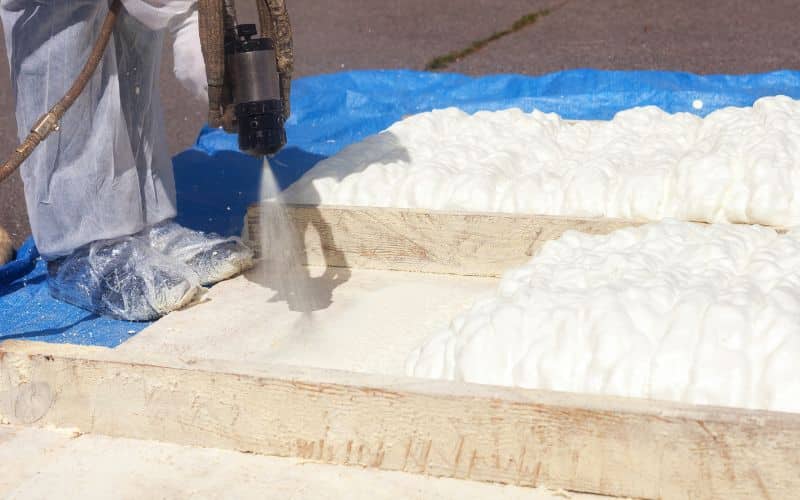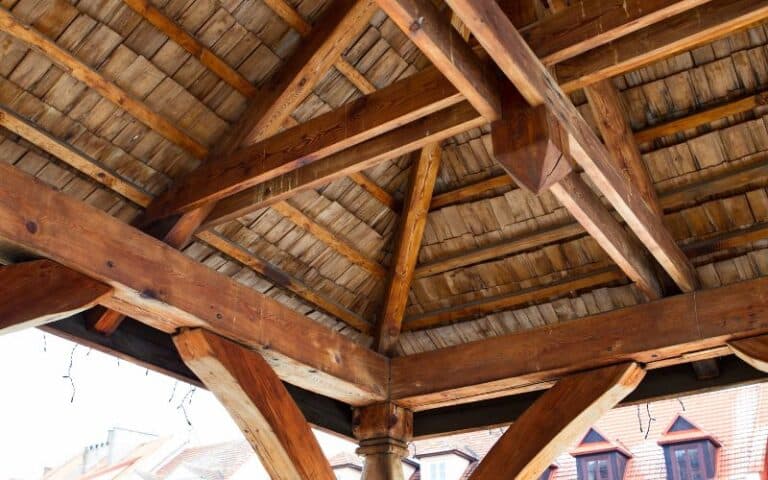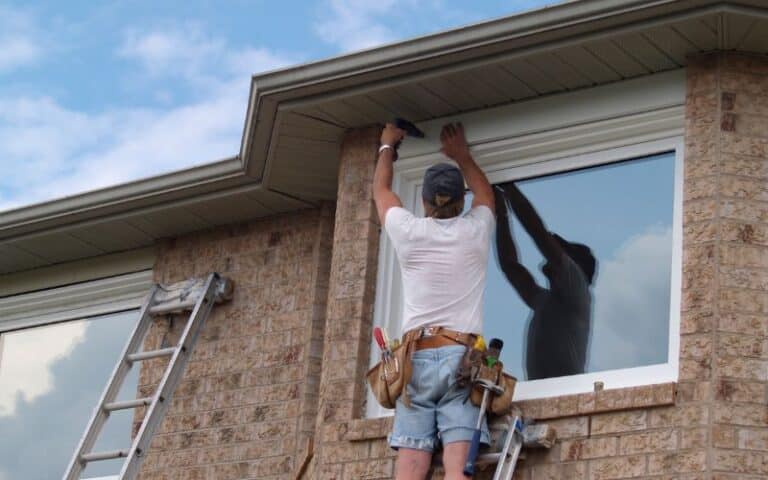There aren’t many methods you can employ to protect yourself from falling and causing harm to yourself or damaging the roof when working as a roofer.
You will frequently encounter circumstances when you must climb a building’s roof without the aid of ladders or other climbing equipment.
An efficient technique to maintain a roof without putting yourself in danger is by using foam pads.
Using foam pads on roofs will provide you with greater grip than rubber shoes since they cling to asphalt shingles. It is because roofs typically get more foot activity than you might think. Sitting or kneeling on the roof’s hard surface with foam pads adds to your comfort while preventing damage to the roof.
Ready for a Roofing Quiz?
Why Do Roofers Use Roof Pads on Roofs?

Roof pads are a preferred option among roofing contractors because of their simplicity, lightweight construction, and durability. For several reasons, roofers use roof pads on roofs.
They are perfect for immediately fixing any difficulties on a roof because they are lightweight and simple to move around.
The roofers’ weight causes the foam, which is very soft and squishy, to compress and take the shape of the shingles. It helps the roofers to adhere to steep roofs like glue.
The pads give the roofers more traction and a pleasant workspace, allowing them to work harder and for longer periods. The benefit to you, the client, is a better roof.
Roofers may use these pads in various weather circumstances because they are strong enough to endure high temperatures.
Since they are composed of lightweight materials, it will be simple to transfer them from one job site to another and handle them safely without endangering the personnel.
Roof pads can also aid in lowering the noise produced by equipment used on roofs. It can ensure that any roof-related construction won’t disturb those residing or working below.
Some Foam pads are made of closed-cell polyethylene, which gives them their strength and lightweight nature.
They come in several sizes to accommodate a range of applications, such as solar panel installation, roof repairs, and insulation work.
They are also a reasonably priced choice that fits the demands of the residential construction sector.
What Type of Foam Pads Do Roofers Use for Foam Pad?
Foam pads can be made from various types of foam, depending on the type of pad utilized and the preference of the roofer.
Foam from old cushions and foam from discarded mattresses are two examples of foam that roofers frequently utilize.
Polyurethane foam, or PU foam, an open cell foam, is another foam used in second-hand mattresses. These different kinds of foam are all reasonably priced and easily accessible at a nearby thrift store.
Seat cushions, camping mats, RV cushions, mattress toppers, and decorative throw pillows are frequently made of soft polyurethane foam.
In addition to manufacturing various cushioning products, this foam is also utilized to make beach towels, picnic blankets, gym mats, and mattress pads.
Due to its strength, flexibility, and comfort, polyurethane is also utilized in automotive applications such as seat covers and headliners.
Another variety of polyurethane foam is lux foam. It is firm, long-lasting, and comfy, which is why it is frequently used to make pillows, cushions, and upholstery pads.
Lux foam is safe for commercial applications because it also contains fire retardants.
Another material for foam padding that is frequently used is polyester fiber batting. Great-grade open-cell polyurethane foam with high support and elasticity is known as high resilience.
Some roofers also use fiberglass cushions. These are a kind of polyethylene foam or polyfoam used in building construction, notably for roofs.
They are constructed from lengthy polyethylene fiber strands that are typically twisted into the shape of a tape.
Below are the pros and cons of using polyurethane foam to make foam pads;
| Pros | Cons |
|---|---|
| It is relatively lightweight. | It has a very low R-value |
| It is incredibly flexible. | It is not dense enough to provide rigid structural support. |
| It retains little or no moisture. | It can shrink over time depending on the conditions of use. |
Can You Go on a Roof Without Foam Pads?
Yes, you can, but it’s not a good idea. Always place foam pads between you and the roof, so you don’t have to take any chances with it!
The foam Pads are made to give workers a secure, non-slip surface, preventing potential mishaps.
Today’s construction business is constantly concerned about safety. Ensuring employees are protected from potential fall risks is especially crucial when working on roofs.
A fall is not hazardous if you use a roof coating, such as silicone or polyurethane. A foam pad is necessary if you work with metal, tiles, or roofing shingles.
It’s crucial to ensure that the roof of your house or other building is as smooth as possible before beginning any work there.
It is crucial for practicality and safety as well as aesthetic considerations. Walking on the roof during an inspection or maintenance project might be challenging if the surface is excessively rough.
The foam pads are useful in this situation. These pads are intended for usage only on flat roofs. They offer a flat, usable surface that is good for walking and working.
The foam pads must first be fastened to the roof structure using fasteners before you can use them. To accomplish this, you can drill holes into the material, then put the screws into the holes.
The wood planks that support the roofing material can also be used as a base for the pads. This base provides a platform for the pads to be attached.
Position the pads over the support beams, then screw them down. You can start using your pads straight away after installing them.
You can tell they are solid and won’t shift under your feet simply walking across the surface.
Additionally, they have good traction on the ground, making it simple to walk on them without slipping.
You can gain several benefits by utilizing the foam pads. First and foremost, it gives the workers a safer working environment.
The surface must be stable and firm because workers will walk on these pads all day. The roofer must move around the roof if you operate with delicate equipment.
The pads are made to last and offer a secure grip even when wet. The pads can also lessen the likelihood of slip and fall accidents, which is a benefit.
You run a higher risk of suffering a fall accident if your staff is regularly working on the roof. The roofer can greatly reduce accidents and injuries by using these pads.
Final Thoughts
Roofers typically use foam pads to protect themselves while working on a roof. These pads offer a flattish surface that is easy to walk on and helps prevent falls.
Foam pads are incredibly strong and can handle roofers’ weight while on the roof. You should always choose the right type of foam pad for the right roofing job to carry out the job effectively.






